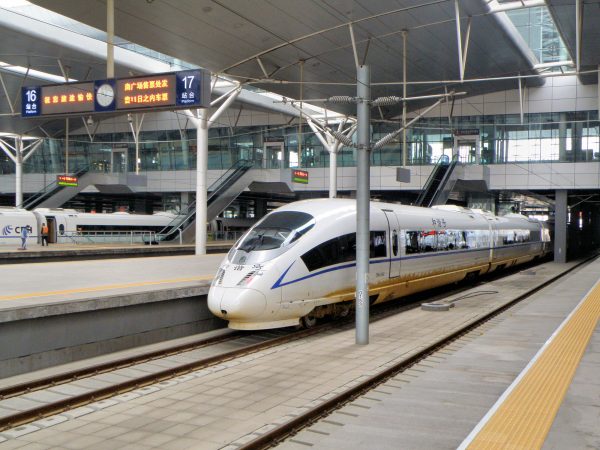
On January 18, China’s State Council released the 14th five-year plan for improving its transportation system. The document lays out ways in which to build and strengthen roads, railways, ports, and waterways, as well as the technology and human capital involved in the transportation industry. After the COVID-19 pandemic ends, supply chain bottlenecks will ease as new infrastructure addresses pre-pandemic constraints.
China’s transportation infrastructure has been a major focus throughout the development process. Currently, China has eight “vertical” (north-south) and eight “horizontal” (east-west) high-speed railways and has eliminated bottlenecks in regular speed railways. The ports have been modernized, and there have been improvements in waterway networks of inland rivers. Highways and bridges have been built up, connecting cities throughout the country.
China has struggled with some logistics issues, including the poor state of warehouses and transportation equipment, urban traffic congestion, and talent shortage in the logistics sector. The plan addresses these issues, promoting the development of intelligent warehousing and distribution facilities, improving equipment standardization, focusing on reducing urban and national expressway congestion, and devoting an entire section to strengthening talent and innovation. The plan will also improve the infrastructure of suburban railways, multimodal freight transportation, and specialized transportation services. The nation aims to go further by developing intelligent transportation technology and low-carbon transportation as well.
The 14th five-year transportation plan will complement increases in urbanization and consumer demand, in addition to factor supply movements. The government has elevated the goal of raising domestic demand for almost a decade, as China moves up the development ladder. In addition, customers are increasingly ordering goods online, increasing the need for specialized and express transportation services. As demand grows, existing transportation infrastructure must carry greater capacity. As a result, there will be a focus on improving internal and external land bridges, including those with connectivity between Beijing-Shanghai, Shanghai-Kunming, Guangzhou-Kunming, Beijing-Hong Kong-Macao, Heihe-Hong Kong-Macao, Ejin-Guangzhou, Qingdao-Lhasa, and Xiamen-Kashgar. This will ensure that demand is satisfied not only in major urban areas, but in sparser and more inland provinces as well.
The plan also focuses on improving the logistics functions of key manufacturing industries, expanding transportation support for intelligent and flexible manufacturing. This is in line with China’s objective to spur innovation and implement new technologies throughout the economy. There has been much emphasis not only on developing new technologies for new industries, but also on infusing new technologies into existing industries, such as manufacturing and now logistics. The overall goal is to reduce logistics costs and increase efficiency. Costs are to be decreased by ensuring more flexible adjustment mechanisms for railway freight prices, reducing port shipping charges, and decreasing logistics taxes and fees.
There is also a focus on improving international logistics, including cooperation with ASEAN and Maritime Silk Road countries, with a special call for increasing logistics information connectivity. This aspect of the transportation development plan meshes with the design of Belt and Road Initiative, which seeks to construct infrastructure across multiple continents.
China’s ongoing efforts to build up its transportation infrastructure and logistics sector make it even harder for multinationals considering a production shift to other Asian nations due to geopolitical conflict to leave China. Firms have found Vietnam and Indonesia to be at a severe disadvantage in terms of infrastructure development. As China strengthens its capacity to cater to multimodal and specialty transportation, its transportation infrastructure is rising to world-class levels.
Despite China’s extensive transportation infrastructure, the nation has faced severe supply chain bottlenecks during COVID-19 due to its zero COVID tolerance policy. Bottlenecks arose due to production and transportation shutdowns, followed by a surge in demand when the pandemic declined in severity in China and other nations. Some of the bottlenecks have been resolved through greater use of technology, particularly autonomous drones, which were used to transport goods and passengers to and from quarantine areas. The pandemic also shifted preferred modes of transportation from public to private to some extent, driving an increased use of motorized vehicles and bicycles.
Post-pandemic transportation will adjust to normal, as supply and demand in this sector calibrate to pre-pandemic levels or higher. China’s infrastructure will continue to be a selling point for multinationals producing and doing business overseas.
China’s Transportation Plan Will Boost Post-Pandemic Logistics
Source: Frappler

0 Comments